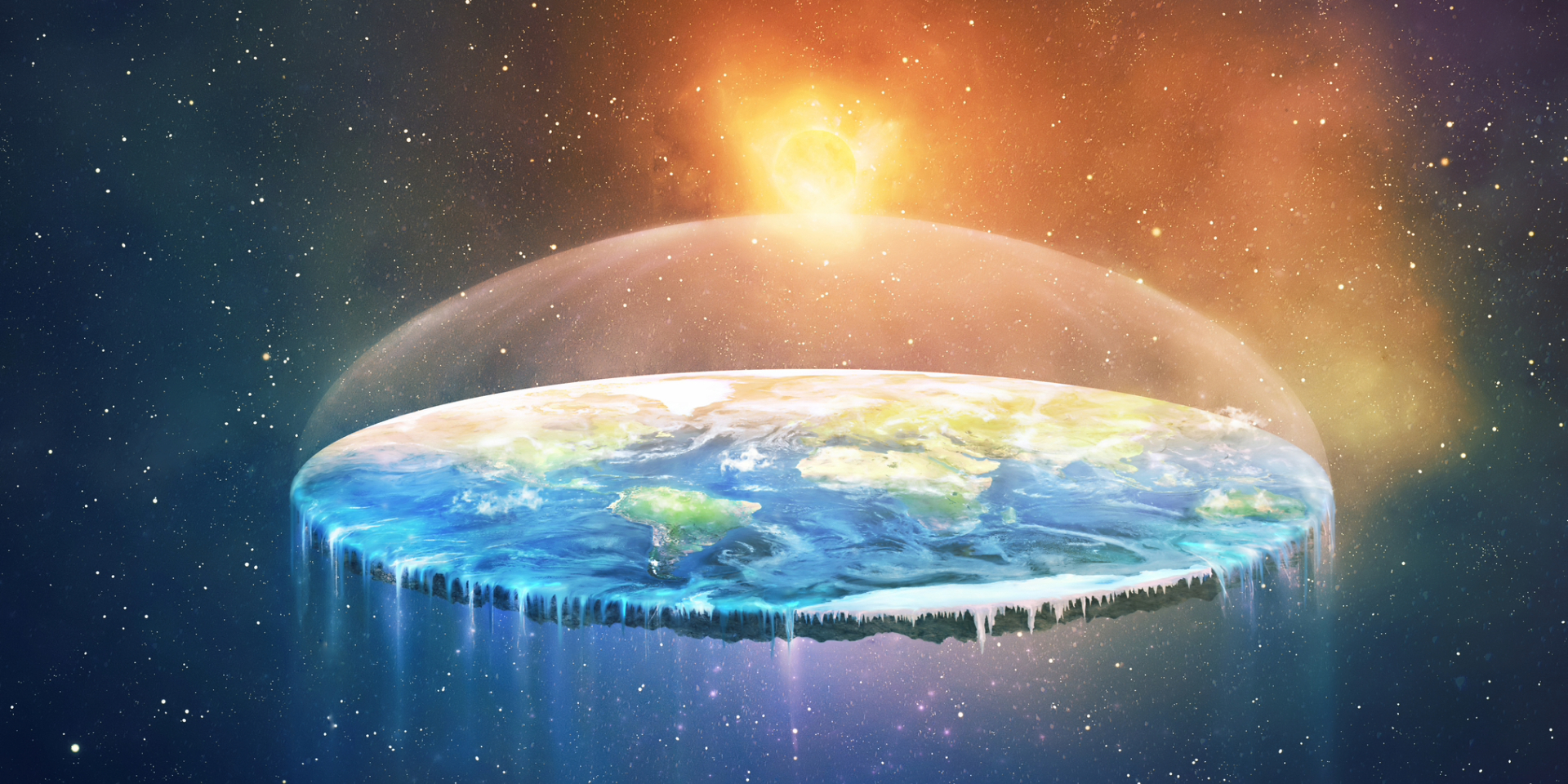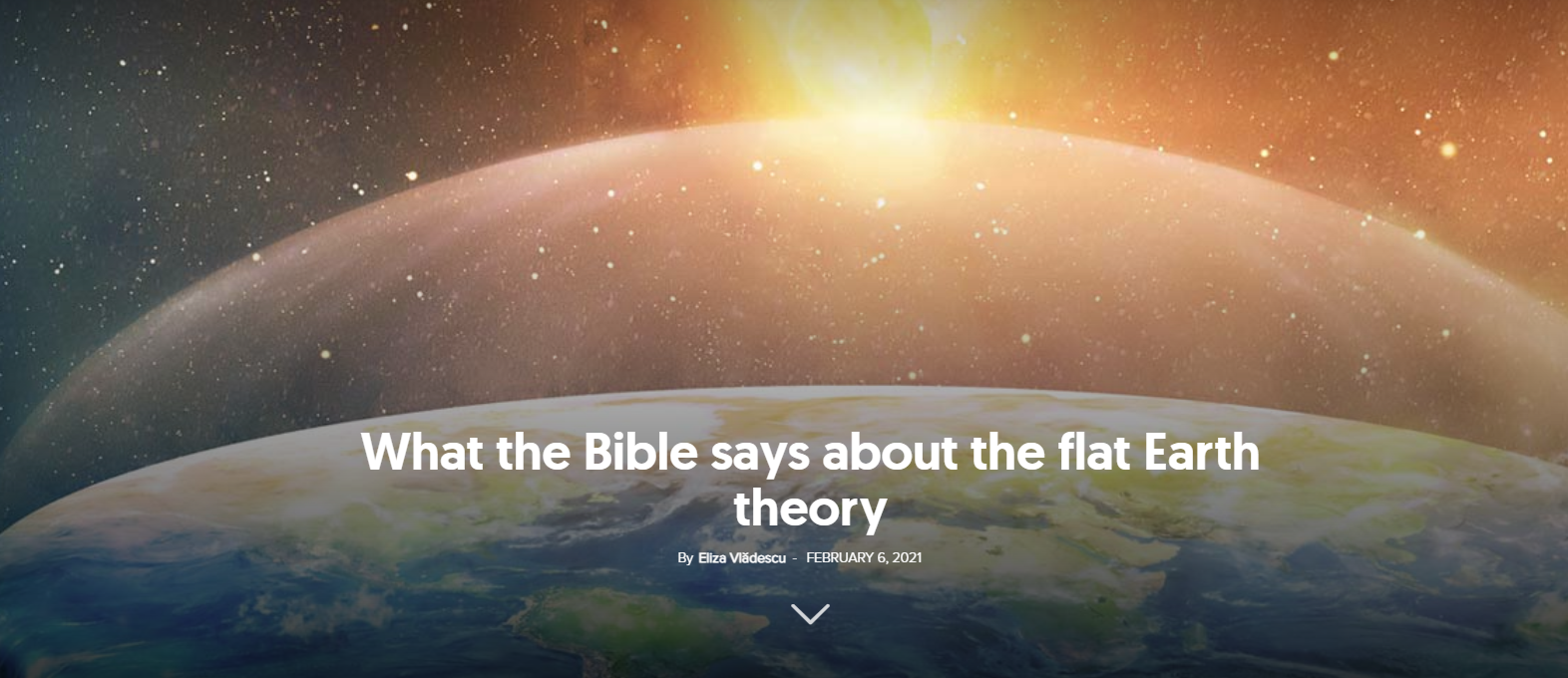Around 10% of Americans and 7% of Brazilians believe that the Earth is flat, that the moon landing was a hoax, and that those vaccinated against Covid-19 unknowingly received a microchip along with the vaccine. Several more percent remain uncertain about the veracity of official information.
In 2019, the city of Dallas hosted an international conference of flat Earth supporters, drawing more than 600 attendees. Similar conferences are held around the world, including one in Cluj-Napoca, Romania. The movement, fueled by social media posts from celebrities, has now gained global traction.
While 10% or 7% may not seem like significant numbers at first glance, when these percentages are applied to the populations of the U.S. and Brazil, it means that over 30 million Americans and more than 16 million Brazilians have embraced a conspiracy theory. Some argue that the real figures may be lower, but no one denies the growing presence of a vocal and influential movement promoting conspiracy theories.
These numbers are particularly surprising given that we’re talking about societies where education is mandatory, and where images of the Earth as a slightly flattened sphere at the poles and bulging at the equator are standard in nearly all school textbooks.
However, the flat Earth discussion goes far beyond mere scientific debate. Flat Earth proponents claim a global conspiracy aimed at preventing people from knowing the truth. Many of these individuals are also fervent advocates of other conspiracy theories, driven by a desire to liberate the world from the grip of greedy elites who, in their view, manipulate science to serve their own malicious goals. Looking at these figures, it’s hard not to wonder how such ideas have spread so widely and why so many people are drawn to these conspiracy theories.
A bit of history
It’s generally believed that the first person to propose the idea of a spherical Earth was Aristotle. While travelling in Egypt, he noticed that the night sky appeared different from what he was used to in Greece. Discovering new constellations, he deduced that the Earth must be round. The ancient Hebrews, on the other hand, were not particularly focused on this topic and did not rush to offer theories about the Earth’s shape.
Eratosthenes, the great Greek scholar of antiquity who lived in the 3rd century B.C., was the first to calculate the Earth’s circumference. His calculations were later confirmed and refined by Arab scientists. The 16th-century navigators, with their successful voyages around the globe, provided the ultimate proof that the Earth is indeed like a giant ball, suspended in space.
However, in the early 1800s, as part of an effort to reject new scientific discoveries, some returned to the idea of a flat Earth. The most famous proponent of this theory was British writer Samuel Rowbotham (1816–1884). He suggested a model of the world in which the Earth was a flat, stationary disc, with the North Pole at the centre and Antarctica replaced by a wall of ice surrounding the outer edge of the disc.
In 1956, also in the UK, another writer, Samuel Shenton (1903–1971) founded the so-called International Flat Earth Research Society. Shenton, the son of a British army sergeant, might not have attended the prestigious universities of his time, yet he was still elected as a member of both the Royal Astronomical Society and the Royal Geographical Society. This position gave him a platform to speak extensively about his views, whether in schools or on television. No amount of evidence could convince him that the Earth was anything but flat.
It’s said that Shenton was frequently invited to talk to children, and sometimes even to university students, and he seemingly never turned down an invitation. Despite his efforts, the general public largely ignored Shenton’s opinions, and the society he founded was disbanded in 2001 following the death of Charles Johnson, who had succeeded Shenton as leader in 1971. However, in 2009, the society was revived, and with the rise of the internet, it gained far more attention than its original founders could have ever imagined.
Contemporary perspectives
Today, the flat Earth theory has gained popularity, not due to any surge in scientific curiosity, but largely because several celebrities have openly supported the idea. Among them is rapper Bobby Ray Simmons Jr., better known as B.o.B, who in 2016 launched a crowdfunding campaign with the aim of sending his own satellites into space to prove that the Earth is flat. According to the BBC, by 2017, he had raised $650 of the $200,000 needed. Other celebrities like Kyrie Irving (star of the Dallas Mavericks), Tila Tequila (a Singapore-born American personality who gained fame on Myspace and later ventured into television, modelling, and music), and NFL player Sammy Watkins have also openly expressed their belief in a flat Earth.
Unfortunately, despite their lack of expertise in astronomy, the opinions of these public figures have resonated with a surprisingly large number of fans. Nick Gurol, a middle school teacher in the U.S., was shocked when his students started embracing the flat Earth theory after hearing Kyrie Irving speak about it. He admitted to questioning where he had failed these kids, who now believed the Earth was flat simply because a basketball player said so. He was deeply concerned for the future of students who seemed so easily swayed by the claims of their favourite celebrity, regardless of scientific evidence.
The never-ending story
This brief overview of the flat Earth debate isn’t about the shape of the Earth itself, but rather to understand how conspiracy theories gain traction. While details may vary, the formula appears to stay the same: an idea that cannot be empirically proven is introduced, often by individuals without the necessary expertise, but who are well-known and admired by a certain audience. Then, a narrative is constructed, often featuring elites or secret societies trying to hide the truth or strip the masses of their freedom by feeding them fundamental lies. Finally, the theory is propagated with an enthusiasm that could be put to far better use.
Like any gossip turned news, conspiracy theories are often widely believed, as the story overshadows the truth. The recipient then becomes an advocate for the theory, sometimes with the same dedication as a robin feeding a cuckoo chick. What’s more, this new belief claims to illuminate other areas of knowledge, leading people to gradually adopt multiple conspiracy theories.
Why what we believe matters
The spread of conspiracy theories is a complex process, rooted in two key communication styles: narrative (real or imagined stories) and argumentative discourse. Both can be surprisingly effective. Some prefer oral storytelling, while others rely solely on written communication, participating in forums or discussion groups. The goal remains the same: to dismantle a previously held worldview and replace it with a hidden truth known only to a select few.
The internet is one of the most powerful tools for spreading conspiracy theories, mainly because “the internet, as a significant vehicle for information in modern societies, is perceived as a more democratic source because it doesn’t rely on a top-down process like traditional media. It is believed to provide direct access to information and to reveal the ‘truth’.”[1] This perception often gives the internet more credibility than colleagues, classmates, or even teachers.
The Internet has enabled conspiracy theories to spread both directly, through content just a click away, and indirectly. For a long time, social media algorithms would suggest more conspiracy-related content to users who expressed interest in these topics. Essentially, a person searching for one subject could be led from theory to theory, keeping them engaged longer on the platform. In theory, algorithms have since been adjusted, but their history reveals how easily we can be steered into specific informational bubbles, often without intending to access them in the first place.
Another crucial factor in the spread of conspiracy theories is the radicalisation of opinions. The narrative behind the facts often carries more weight than the facts themselves, so the story becomes the ultimate argument for why we are encouraged to believe it. Even if this rigid thinking is framed as religious or scientific, it frequently has little to do with either religion or science and is often just a form that masks resentment toward a particular system of world order.
In the end, why does the content of our beliefs matter (what we believe), as long as we are sincere in those beliefs? Can’t we live happily regardless of whether the Earth is shaped like a boiled egg or the plate on which that egg rests? After all, ignorance is bliss, as the saying goes. However, the reality that a football player, a singer, or a writer can be more credible in fields where they have no expertise than specialists in those fields has serious implications for both the safety and the quality of life.
Simona Stano doesn’t mince words when she asserts: “Conspiracy theories can be conceived as a symptom of a larger problem embedded in the infrastructure of current communication systems; that is to say, the so-called ‘post-truth’ era. In contemporary rhetoric, the subjective and emotional component (i.e. appeals to emotion and personal belief) has become evidently more influential than the referential one, to the extent that personal beliefs have replaced verified facts…. The mechanism of followers and likes on which such media are based does not dismantle falsehoods, but rather reinforces them, making sharing and belonging prevail over reliability and truth.”[2]
In this regard, the responsibility doesn’t lie solely with others—it is something we all bear. Censoring information from a political or religious authority is neither a solution nor a genuine deterrent to the spread of false ideas. On the contrary, such an approach might fuel the spread of fake news even further and would only serve to encourage misinformation and division. This is exactly why censorship should not be used.
What we do need are sound principles to understand reality and greater responsibility when sharing our opinions or those of others. It is up to us whether the internet continues to be a space for openness, creativity, vision, and shared joy—or whether it becomes a breeding ground for confusion and misinformation. Every like, share, or view is a step in the direction we choose to go. Forsaking the truth in the name of a so-called ‘truth’ is ultimately a greater disaster than any crisis we’ve faced so far, for only the truth can truly set us free (John 8:32).
Adrian Neagu draws from concrete examples to unravel how conspiracy theories spread.




















